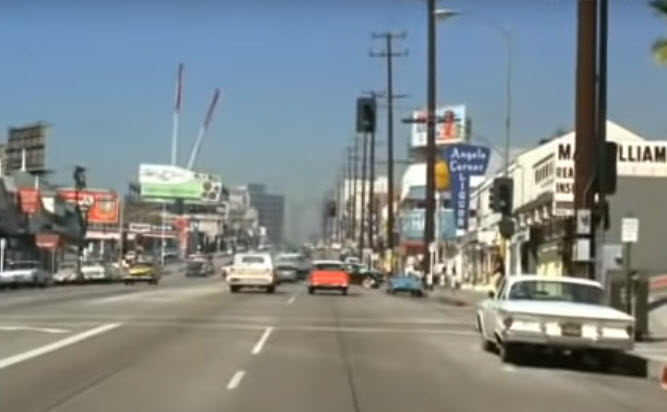Summary | Excerpt | Reading Guide | Reviews | Beyond the Book | Read-Alikes | Genres & Themes | Author Bio

A Novel
by Taylor Jenkins ReidThis article relates to Daisy Jones & The Six
 Titular character Daisy Jones from Taylor Jenkins Reid's novel Daisy Jones & The Six comes of age in the 1970s, visiting rock clubs on the Sunset Strip in Los Angeles. This 1.6 mile stretch of music venues, nightclubs, restaurants and retail stores on Hollywood's Sunset Boulevard has a long, fascinating history full of intrigue, and remains one of L.A.'s most prominent attractions.
Titular character Daisy Jones from Taylor Jenkins Reid's novel Daisy Jones & The Six comes of age in the 1970s, visiting rock clubs on the Sunset Strip in Los Angeles. This 1.6 mile stretch of music venues, nightclubs, restaurants and retail stores on Hollywood's Sunset Boulevard has a long, fascinating history full of intrigue, and remains one of L.A.'s most prominent attractions.
In the 1920s and 30s, stars like Lana Turner, Fred Astaire and Jean Harlow were frequent visitors to the Strip's Players Club and Cafe Trocadero. The latter was originally a speakeasy called Cafe La Boheme during Prohibition, reopening as Trocadero in 1934. The club kept up the spirit of its original illicit iteration with an illegal gambling ring operating in the basement that attracted Hollywood producers from MGM and Universal Studios, while famous actors and actresses danced to jazz upstairs.
A nightclub called Ciros (now the Comedy Store) gained popularity in the 1940s, attracting stars like Lucille Ball, Cary Grant and Humphrey Bogart. This club operated until 1957, and was known for being the locale where celebrities mixed with gangsters. Frank Sinatra was arrested at Ciros in 1947 for punching journalist Lee Mortimer in the jaw after Mortimer used a derogatory Italian racial slur and accused Sinatra of having ties to the mob. In the 1950s, nightclub Macambo became one of the most famous spots on the Sunset Strip. Ella Fitzgerald's performance at this club in 1955 essentially launched her career (a performance made possible in part due to the intervention of one of her biggest fans, Marilyn Monroe).
In the 1960s and 70s, the Strip became a well-known destination for rock music, as is depicted in Daisy Jones & The Six. Whisky a Go Go opened in 1964 and attracted the talents of Led Zeppelin, Jimi Hendrix, the Who, and many others. Another venue, Pandora's Box, hosted the Beach Boys, the Byrds, and Sonny and Cher. This club played a part in the 1966 curfew riots (mentioned in Reid's novel), in which roughly 1,000 young demonstrators protested the attempt to impose a 10 p.m. curfew on the street to cut down on loitering and noise complaints. The protests lasted (off and on) for six weeks, and also attracted celebrities, including Peter Fonda and Jack Nicholson. Whisky a Go Go still stands, but Pandora's Box closed shortly after the riots.
The Roxy opened in 1974 (and remains open), and the Viper Room (co-founded by Johnny Depp) in 1993. The latter was infamously the site of the overdose death of actor River Phoenix the same year it opened. Depp sold his share of the Viper Room in 2006. Other popular present day attractions on the Strip include the Saddle Ranch Chop House (a Western-themed restaurant), Pink Taco (a Mexican restaurant run by the current owner of the Viper Room), and Rock and Reilly's Irish Pub (a bar/restaurant with A-list clientele that serves 57 different types of Irish whiskey).
Filed under Places, Cultures & Identities
![]() This "beyond the book article" relates to Daisy Jones & The Six. It originally ran in May 2019 and has been updated for the
February 2020 paperback edition.
Go to magazine.
This "beyond the book article" relates to Daisy Jones & The Six. It originally ran in May 2019 and has been updated for the
February 2020 paperback edition.
Go to magazine.
Your guide toexceptional books
BookBrowse seeks out and recommends the best in contemporary fiction and nonfiction—books that not only engage and entertain but also deepen our understanding of ourselves and the world around us.